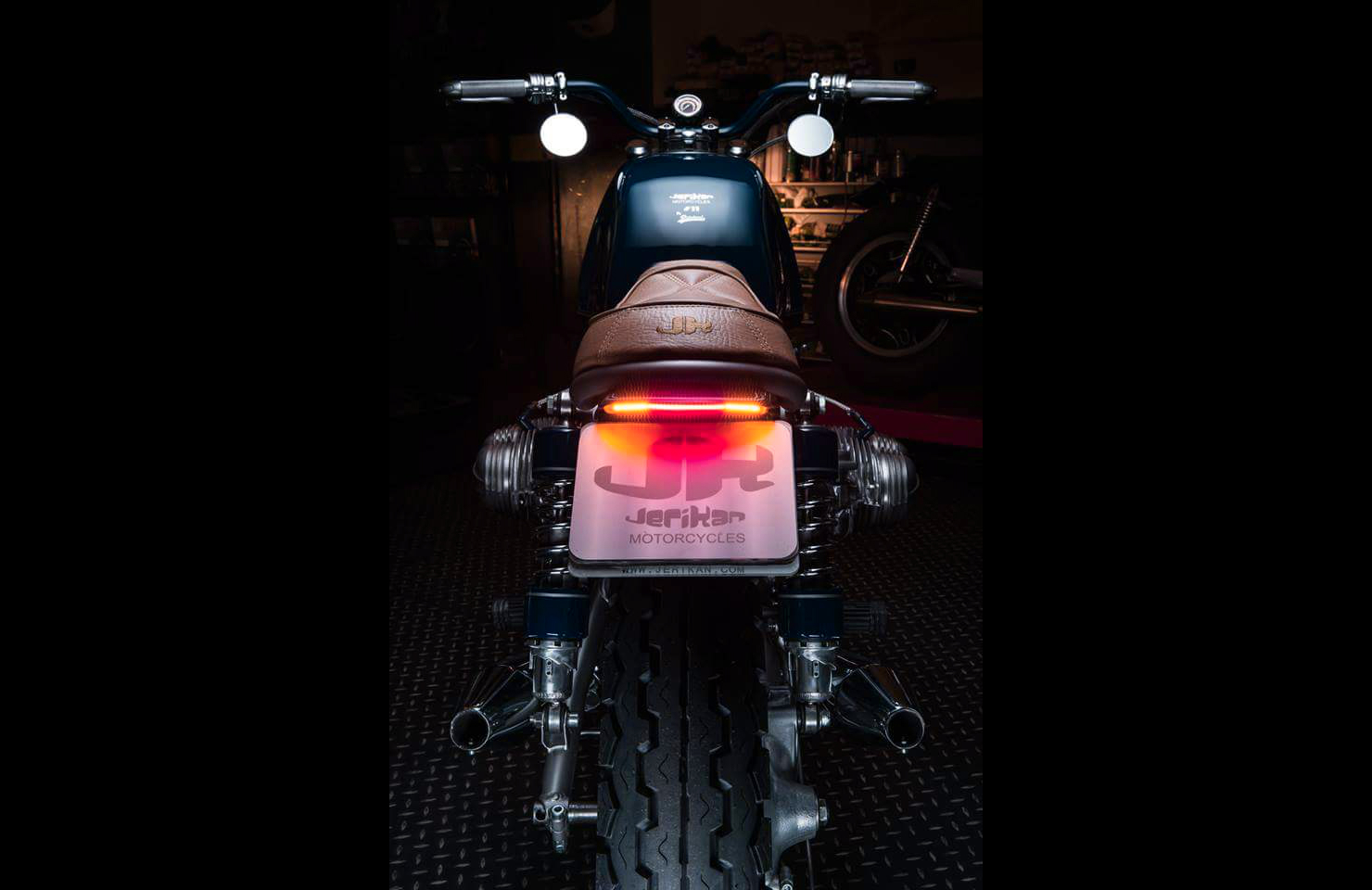Introducing the latest build by our friend
Francesco Armino -
Fiftyfive Garage, Perugia (Italy)
After the success of the
Guzzi Scrambler (*),
Francesco wanted to put his hands on the queen of the donor bikes: the
Harley Davidson Sportster. This 2001
XL883 is the seventeenth build by
Fiftyfive Garage and was named "
Friday the 17th" after a series of lucky strikes... The bike was entirely stripped down and fully overhauled. To lift the rear end, traditionally sat, and in order to avoid radical changes to the frame, a couple of longer
Burly shocks have been selected. Also the front end has been revised and the work has been completed with the installation of traditional hoods. A lenticular rim has been chosen for the rear end while a spoke rim has been maintained at front, both powder coated matte black, wearing
Duro knobby tires and both street legal. The fuel tank is stock, painted Metallic brown with a glossy finish and amintains its original 110th anniversary logo. Same paint, but with a matt finish, was used for the custom aluminium fenders and for the spare fuel tank, which, properly modified, serves as a storage compartment. The brushed aluminum number plates have been made by
Emanuele of "
Della Sign": the embossed numbers on the left side are painted black, while the numbers on the exhausts' side are punched and replaced by a wire mesh, thus serving as a protection. The nice flyscreen is punched to make room to the right sided LED frontlight. Exhausts are by
Storz and give the bike a beautiful voice. The
Arlen Ness air filter makes the stock engine breath freely. The leather seat, which, if necessary, can accommodate a passenger, has been handmade by a local craftsmen, including the metal seat pan, and it contributes to raise the riding position. The vintage offroad handlebar is properly sized and allows an active and aggressive riding.
Dopo gli apprezzamenti per la
scrambler su base Guzzi (*),
Francesco aveva voglia di mettere mano in chiave tuttoterreno alla regina delle donor bikes: la
Harley Davidson Sporster. Questa
XL883 del 2001 è la diciasettesima realizzazione di
Fiftyfive Garage ed è stata chiamata "
Venerdì 17" per una serie di coincidenze fortunate... La moto è stata smontata e revisionata. Per sollevare il retrotreno della Sporty, tradizionalmente seduto, non volendo effettuare modifiche radicali al telaio, sono stati montati ammortizzatori
Burly di interasse maggiorato e anche l'avantreno è stato oggetto di interventi di ottimizzazione, terminati con il montaggio dei classici soffietti. Per le ruote, è stato scelto un cerchio lenticolare al posteriore e a raggi all'anteriore, entrambi verniciati a polvere nero opaco, vestiti con pneumatici
Duro tassellati nelle misure libretto. Il serbatoio è originale Harley verniciato Metallic brown con finitura lucida e stemmi del 110th anniversario anch'essi originali. Stessa vernice ma con finitura opaca è stata utilizzata per i parafanghi artigianali in alluminio e la tanica che, munita di apertura e rivestita internamente, funge da portaoggetti. Le tabelle rettangolari stile dirt track sono state realizzate da
Emanuele di "
Della Sign" in alluminio spazzolato con numeri in rilievo verniciati sul lato sinistro e numeri fustellati e sostituiti da una rete sul lato scarichi, fungendo così anche da protezione. Bella la tabella/flyscreen che lascia spazio al faro anteriore con bordo LED montato disassato. A led anche il faro posteriore. Gli scarichi sono
Storz, con collettori bendati termicamente. Il filtro aria
Arlen Ness permette una migliore respirazione del motore, rimasto di serie. La sella in pelle, che all’occorrenza può ospitare un passeggero, è stata realizzata a mano da artigiano locale, compresa la base in metallo, e contribuisce al sollevamento della quota di guida. Il manubrio vintage da cross ha dimensioni importanti, induce a una posizione aggressiva e favorisce una guida attiva.




























































